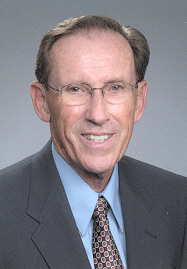
|
The
History of the International Institute of Reflexology USA
|
 |

|
History
of Reflexology The origins of Reflexology evidently reach back to ancient Egypt as evidenced by inscriptions found in the physician’s tomb at Saqqara in Egypt. The translation of the hieroglyphics are as follows: "Don’t hurt me." The practitioner’s reply:- " I shall act so you praise me. " We cannot determine the exact relationship between the ancient art as practiced by the early Egyptians and Reflexology as we know it today. Different forms of working the feet to effect health have been used all over the ancient world. Dr. Riley maintained that this form of healing spread from Egypt via the Roman Empire. |
|
|
|
He
called his work Zone Analgesia where pressure was applied to the
corresponding bony eminence or to the zones corresponding to the
location of the injury. He also used pressure points on the tongue,
palate and the back of the pharynx wall in order to achieve the desired
result of pain relief or analgesia. He made use of the following tools:
elastic bands, clothes pegs and aluminum combs, on the hands, surgical
clamps for the tongue, nasal probes and a regular palpebral retractor
for the pharynx, He was responsible for formulating the first chart on
the longitudinal zones of the body.
Dr. Fitzgerald discovered a very interesting fact, that the application of pressure on the zones not only relieved pain but in the majority of cases also relieved the underlying cause as well. The same result is experienced through Reflexology today, which is based partially on the Zone Theory. Dr. Shelby Riley, M.D. worked closely with Dr. Fitzgerald and developed the Zone Theory further. It seems that he added horizontal zones across the hands and feet, together with the longitudinal zones and thus determining individual reflexes according to the Zone Theory. He, like Fitzgerald, espoused continual pressure on the reflex or point of contact. Eunice D. Ingham, a Physical Therapist, worked closely with Dr. Riley and was fascinated by the concept of Zone Therapy and started developing her foot reflex theory in the early 1930's. She had the opportunity to treat hundreds of patients where each reflex point of contact had been carefully and thoughtfully checked and rechecked until with all confidence she was able to determine that the reflexes on the feet were an exact mirror image of the organs of the body. Dr. Riley encouraged her to write her first book entitled "Stories The Feet Can Tell" where she documented her cases and carefully mapped out the reflexes on the feet as we know them today. |

|
|
This
book was published in 1938 and was later translated into seven foreign
languages which spread the benefits of Reflexology way beyond the
borders of the States. The confusion between Reflexology and Zone
Therapy started at this point because the foreign publisher changed the
name of Eunice’s book, " The Stories The Feet Can Tell" to
"Zone Therapy" and in some parts of the world it is still
thought of as Zone Therapy. However, there is a distinct difference
between the two therapies. Zone Therapy relies solely on the zones to
determine the area to be worked, whereas Reflexology takes the zones as
well as the anatomical model to determine the area or areas to be
worked.
After the publication of her book Eunice Ingham found herself on the program at many health workshops. She traveled around the country giving book reviews. Only sick and dilapidated people attended these book reviews/ workshops where she would teach people by working on them and discuss their particular health problems. As these sick people, whom everyone else had given up on, got better the word spread and Reflexology became better known amongst the medical fraternity as well as lay people. In the late 50's Dwight Byers started helping Eunice Ingham at her workshops. In 1961 Dwight Byers and his sister Eusebia Messenger, RN joined their Aunt Eunice teaching at workshops on a full time basis. Seven years later they became responsible for the continued teaching of Reflexology under the banner of The National Institute of Reflexology. In the mid 70's Eusebia retired and Dwight Byers formed The International Institute of Reflexology®, where the theories and techniques of Reflexology were further refined. |
 |
Eunice
Ingham died in 1974 at the age of 85 still thoroughly convinced that
Reflexology could aid in easing the suffering of mankind. She was on the
road with that message until the age of 80. Eunice Ingham’s undisputable
contributions to the world of Reflexology are as follows: 1. The discovery that the reflexes on the feet are a mirror image of all the organs, glands and parts of the body - the charted map of the reflexes according to the anatomical model. 2. The alternating pressure, has a stimulating effect on the body rather than a numbing effect as demonstrated by Dr. Fitzgerald. 3. Bringing Reflexology to the public and the non-medical community, as well as Naturopaths, Chiropodists, Osteopaths, Massage Therapist and Physiotherapists. Dwight Byers and his wife Nancy have been responsible for formulating and consolidating the teachings of Eunice Ingham through The International Institute of Reflexology®. Dwight authored the book, "Better Health with Foot Reflexology The Original Ingham Method®", in 1983, revised 2001. Dwight Byers has shown the same dedication as his Aunt Eunice Ingham by promoting Reflexology and a healthier way of life in all states in the USA and many countries as far abroad as Australia, New Zealand, Singapore, Europe, Israel, South Africa and South America. Dwight passed away in 2020 at the age of 91 1/2. Leaving behind the Reflexology legacy to his daughter Gail who has been in Reflexology since the age of 10. These are the people who have pioneered, developed and built the solid foundation for Reflexology as we know it today. |